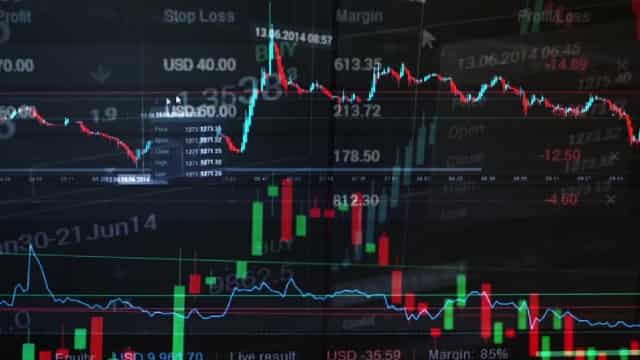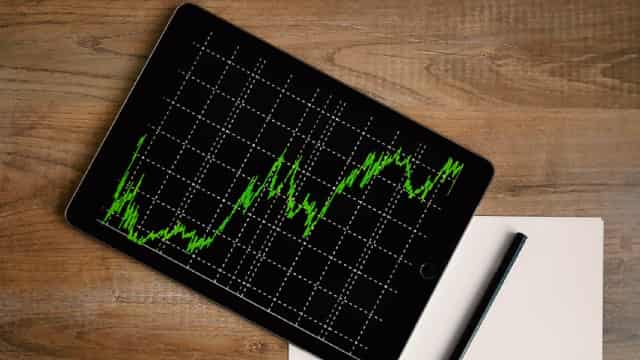iShares 20+ Year Treasury Bond BuyWrite Strategy ETFTLTW
TLTW
0
Funds holding %
of 7,407 funds
–
Analysts bullish %
Fund manager confidence
Based on 2024 Q4 regulatory disclosures by fund managers ($100M+ AUM)
150% more first-time investments, than exits
New positions opened: 25 | Existing positions closed: 10
20% more repeat investments, than reductions
Existing positions increased: 30 | Existing positions reduced: 25
14% more funds holding
Funds holding: 76 [Q3] → 87 (+11) [Q4]
0.64% less ownership
Funds ownership: 24.25% [Q3] → 23.62% (-0.64%) [Q4]
17% less capital invested
Capital invested by funds: $280M [Q3] → $232M (-$47.3M) [Q4]
50% less funds holding in top 10
Funds holding in top 10: 2 [Q3] → 1 (-1) [Q4]
Research analyst outlook
We haven’t received any recent analyst ratings for TLTW.
Financial journalist opinion
Based on 3 articles about TLTW published over the past 30 days
Neutral
Seeking Alpha
5 days ago
TLTW: A Sharp Rally In Bonds Is A Risk (Double Rating Downgrade)
I am downgrading the iShares 20+ Year Treasury Bond BuyWrite Strategy ETF from Strong Buy to Hold due to rising risks of a significant rally in long-term Treasuries. TLTW employs a covered call strategy, which performs best in a sideways trading range but limits upside in strong rallies, making TLT a better option now. The recent sell-off in Treasuries appears driven by liquidity needs rather than fundamentals, suggesting the potential for a substantial recovery in TLT, which TLTW may underperform.

Negative
Seeking Alpha
5 days ago
TLTW: Investors Losing Confidence
President Trump's tariffs may spur inflation, prompting a hawkish Federal Reserve response, which could negatively impact long-term bonds like TLTW. The U.S. budget deficit may worsen due to Trump's tax cuts, increasing long-term default risk and reducing international demand for treasuries. Antagonizing major trading partners like China could further reduce demand for U.S. treasuries, making long-term bonds less attractive.

Neutral
Seeking Alpha
4 weeks ago
TLTW: Long Bonds Might Be Under Pressure For A While (Rating Upgrade)
Long-term Treasury bonds have experienced significant drawdowns due to rising yields, driven by concerns over increasing U.S. debt and persistent inflation. TLTW, a buy-write ETF that holds TLT and sells covered calls, offers downside protection and income generation, outperforming TLT during periods of rising yields and range bound markets. The recent decline in long-term yields is likely temporary, and yields are expected to rise again due to persistent inflation and the delayed effects of government spending cuts.

Neutral
Seeking Alpha
1 month ago
TLTW: DOGE Cuts May Benefit Bonds
The TLTW ETF has lost 9.0% in market value over the past year but earned enough premium income to achieve a modest 4.9% total return. The ETF's strategy of writing covered call options caps upside returns while retaining most downside risks, leading to a 40% market value decline since inception. President Trump's administration, with Elon Musk's DOGE, aims to cut $2 trillion from the federal budget. This could significantly slow down economic growth and lead to lower bond yields.

Neutral
Seeking Alpha
2 months ago
Instead Of TLTW, I Chose This Strategy For Better Leverage On TLT
TLTW, with its slightly OTM covered call strategy, performs better than LQDW or HYGW compared to its underlying ETF but has had a negative total return since its inception. While in the very short term the picture is blurred, mid- to long-term I have a neutral-to-bullish stance on TLT. Implementing a personalized covered call strategy on TLT should bring gradually better returns than TLTW, which faces problems in at least 50% of the scenarios.

Positive
Seeking Alpha
3 months ago
TLTW: Soft Landing And A Trading Range For Yields
TLTW has outperformed TLT, losing only 2% compared to TLT's 4.4% decline, thanks to its covered call strategy generating additional income. A trading range in long-term Treasury bonds, similar to the late 1990s, is the ideal environment for TLTW's covered call strategy. The current yield curve and Fed policy mirror the late 1990s, suggesting a prolonged period of near-zero slope, beneficial for TLTW.

Positive
Seeking Alpha
3 months ago
TLTW: You Don't Need This Fund For Income
iShares 20+ Year Treasury Bond Buywrite Strategy ETF sells 2% OTM monthly calls on TLT, yielding up to 20%, but has seen a 40.84% decline since inception and a 12% loss in total returns. TLTW's rigid options strategy and volatile distributions make it a poor fit for passive income investors; active management is required. Despite a 14.52% yield, TLTW's performance and strategy limitations lead to a Sell rating and recommendation for buy-and-hold income investors to seek option funds with more active approaches.

Neutral
Seeking Alpha
4 months ago
TLTW: Bullish Bonds? Then Avoid TLTW
TLTW, a passively managed fund with a 0.35% expense ratio, writes one-month covered call options on TLT, boosting yield but capping gains. TLTW's TTM yield is 14.16%, significantly higher than TLT's 3.95%, making it attractive for income-focused investors despite its price downtrend. TLTW outperforms TLT in downtrends due to its income from premiums but underperforms in rapid recoveries.

Positive
Seeking Alpha
4 months ago
TLTW: 15% Yield With Favorable Macro
iShares 20+ Year Treasury Bond Buywrite Strategy ETF buys TLT and sells call options, generating higher income but capping upside potential. TLTW has underperformed in price return but offers significantly higher income, making it attractive for aggressive income investors despite volatility risks. Its total return has eclipsed its underlying. The Fund's passive strategy involves selling ATM options monthly, which has outperformed TLT in total return but may result in increased capital losses.

Positive
Seeking Alpha
5 months ago
TLTW ETF: Maybe It's Time To Accumulate
TLTW's high yield (15.34%) and effective rolling method make it an attractive investment, despite potential risks from sudden TLT price increases. In my opinion, is a good time to accumulate TLTW as a hedge for fixed-rate portfolios due to the current macroeconomic scenario and yield curve steepening. The steepening yield curve and ongoing Fed rate cuts suggest long-duration Treasury yields may not decrease significantly, making TLTW a strategic addition.

Charts implemented using Lightweight Charts™